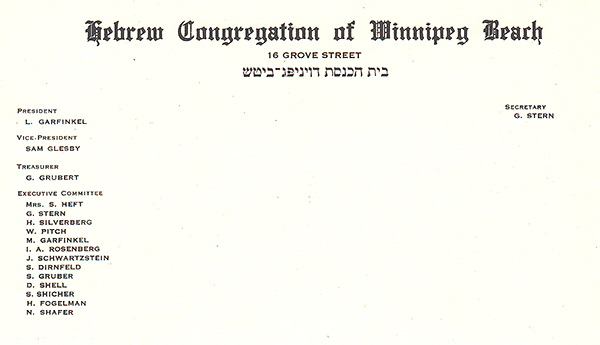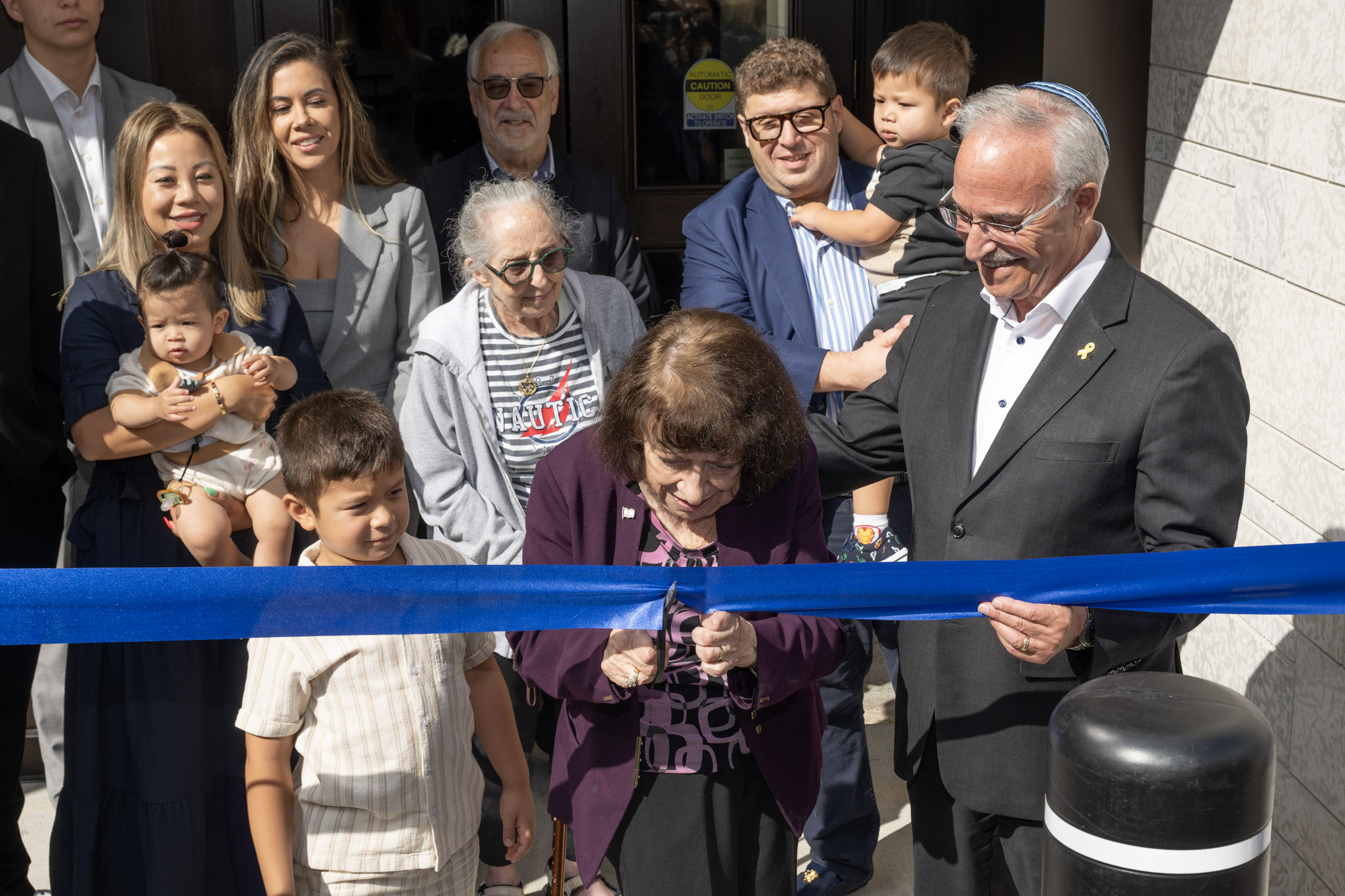Local News
Haifa University professor delivers presentation on malignant influence of AI in promoting growth of online anti-Semitism

By MYRON LOVE For a lifelong journalist such as myself, the development of the internet has been a real boon. Long gone are the days when I would have to mail in my stories and photos – the latter after having to wait a week for the photos to be developed. With the click of a computer key or two, I can check the correct spelling of names and titles, the work and education history of almost anyone or any business or institution I am writing about. There is a world of information at my fingertips.
Regrettably though, as with most things in life, there is potential for harm as well as good – and the internet – in particular, social media – is no exception. Malicious players can – and do – use social media to foment “misinformation” and hate with their efforts greatly enhanced by the ongoing development of AI (artificial intelligence) against Jews in general and Israel specifically.
The scope of the problem was outlined a couple of weeks ago by University of Haifa Professor Dr. David Barak-Gorodetsky during a presentation – “Anti-Semitism Unplugged: Can AI Combat Hate” – at the new Congregation Etz Chayim – under the auspices of Canadian Friends of Haifa University. Gorodetsky’s presentation in Winnipeg was the first stop on a tour of Jewish communities in Western Canada with plans to also speak in Vancouver and Calgary.
The presentation – which attracted about 100 – began with a prayer for the People of Israel and the IDF and the safe return of the hostages, led by Etz Chayim’s spiritual leader Rabbi Kliel Rose.
Prior to introducing the guest speaker, former Winnipegger Ariel Karabelnicoff, the executive director of CFHU, screened a video and provided an overview of Israel’s youngest university (which was founded in 1972).
In an interview earlier this year, Karabelnicoff noted that the university has an enrolment of 18,000 students – with a student body that reflects the diversity of Israel’s population. About 40% of the students come from the Druze, Circassian and Arab communities and – among the Jewish students – there are many whose families are from Ethiopia.
He pointed out that the university has several campuses. The original campus – a 30-floor structure on Mount Carmel, houses several faculties – among them the Faculty of Law – in its new building – and the Leon H. Charney School of Marine Sciences that offers the only graduate program in Israel in that field. The Computer Science Faculty is located in the port area. . The faculty of Design and Architecture – formerly the Neri Bloomfield School of Design under Hadassah-WIZO hospices – is situated in Haifa’s German Colony neighbourhood.
Coming soon for the University of Haifa, Karabelnicoff reports, will be a new School of Medicine. The school, he reported, will start teaching the first 50 students in October 2025. In subsequent years 150 students a year will be trained on a regular basis.
David Barak-Gorodetsky is a graduate of the University of Haifa – having earned his Ph.D. in 2016. (He is also an ordained Reform rabbi – Hebrew Union College , 2017.) Barak-Gorodetsky is currently head of both the University’s Ruderman MA Program for Jewish American Studies within the Department of Jewish History and the Elizabeth and Tony Comper Interdisciplinary Center for the study of Antisemitism and Racism.
One very concerning statistic that he cited, based on reports by CyberWell, is that, previous to October 7, 75% of Arabic language posts on social media flagged as anti-Semitic focused on Jewish stereotypes, tropes and conspiracy theories. Since October 7, that figure has dropped to about 25% – but now 60% are calling for violence against Jews – while many are also denying that the mass rapes happened or are blaming Israel for what happened.
“October 7 denial, spurred on by AI has become a major issue,” he said.
At the same time, Barak-Gorodetsky pointed out, there is widespread indifference to the exponential increase in anti-Semitism on social media. The scale of that indifference, he noted, is borne out by the fact that, while over 1,500 academic papers had been written about online hate, less than 1% of them deal with anti-Semitism.
One of the major difficulties in combating AI-created anti-Semitism on social media, he pointed out, is that anti-Semitism is not always easy to define or recognize. He cited the example of efforts by Holocaust deniers to discredit “The Diary of Anne Fran,” by suggesting that some of the pages were written with ball point pen ink. Ball point pen ink was not introduced until the 1950s. The allegations are based on two scraps of paper that were added to the diary – most likely by Otto Frank – decades later.
He spoke about “dog whistles” – coded language such as substituting the term “Zionist” for “Jew,” chanting “from the river to the sea,” or comparing Israel to Nazi Germany.
Barak-Gorodetsky noted that a major challenge to removing anti-Semitic material is that the process is labour intensive. “The rate of removal is only about 30%,” he reported.
“At the Universoty of Haifa,” he noted, “we have initiated a project whose focus is to create methods of detecting Anti-Semitism on social media and developing bots and other means to counter it or remove it.”
He added that among the project’s team members are individuals who specialize in certain languages and regions such as Russia and India.
Gorodetsky was asked what individuals can do in terms of online hate. His response was: Strengthen one’s own Jewish identity. “Don’t just play defense,” he advised. “Try to find joy in Judaism.”
The Canadian Friends of Haifa University, Ariel Karabelnicoff noted, has been in operation since 1973. The organization has been, until now, largely focused on Toronto. As executive director, he is working to expand the CFHU outreach to other Canadian Jewish communities.
“There are a lot of Israelis living in Winnipeg, for example,” he said in that earlier interview. “I have begun reaching out to them.
“I would also like to see if we could negotiate some joint programming Between Haifa University and the University of Manitoba.”
For readers interested in contacting Ariel about supporting Canadian Friends of Haifa University, his email address is ariel.karabelnicoff@haifa-univ.ca.
Local News
Thank you to the community from the Chesed Shel Emes

We’re delighted to share a major milestone in our Capital Campaign, “Building on our Tradition.” Launched in November 2018, this campaign aimed to replace our outdated facility with a modern space tailored to our unique needs. Our new building is designed with ritual at its core, featuring ample preparation space, Shomer space, and storage, creating a warm and welcoming environment for our community during times of need.
We’re grateful to the nearly 1,000 generous donors who contributed over $4 million towards our new facility. A $750,000 mortgage will be retired in November 2025, completing this monumental project in just seven years.
We’re also thrilled to announce that our Chesed Shel Emes Endowment Fund has grown tenfold, from $15,000 to $150,000, thanks to you, the Jewish Foundation of Manitoba’s FundMatch program, and Million Dollar Match initiative in 2024. Our fund helps ensure that everyone can have a dignified Jewish funeral regardless of financial need.
As we look to the future, our goal remains to ensure the Chevra Kadisha continues to serve our community for generations to come. Our focus now shifts to replenishing our savings account and growing our JFM Endowment fund.
We’re deeply grateful for your support over the past several years.
It’s our privilege to serve our community with care and compassion.
With sincere appreciation,
Campaign cabinet: Hillel Kravetsky, Gerry Pritchard, Stuart Pudavick,
Jack Solomon, and Rena Boroditsky
Murray S. Greenfield, President
Local News
Winnipeg Beach Synagogue about to celebrate 75th anniversary

By BERNIE BELLAN (July 13) In 1950 a group of cottage owners at Winnipeg Beach took it upon themselves to relocate a one-room schoolhouse that was in the Beausejour area to Winnipeg Beach where it became the beach synagogue at the corner of Hazel and Grove.
There it stayed until 1998 when it was moved to its current location at Camp Massad.
On August 2nd members of the synagogue will be holding a 75th anniversary celebration.

As part of the celebration anyone who is a descendant or relative of any of the original members of the first executive committee (as seen in the photo here) is invited to attend the synagogue that morning.
If you are a relative please contact Abe Borzykowski at wpgbeachshule@shaw.ca or aborzykowski@shaw.ca to let Abe know you might be attending or for more information about the 75th anniversary celebration.
We will soon be publishing a story about the history of the beach synagogue, which is something I’ve been writing about for over 25 years.
Local News
Vickar Family cuts ribbon on new Tova Vickar and Family Childcare Centre

By MYRON LOVE In the words of Larry Vickar, the Shaarey Zedek’s successful Dor V’ Dor Campaign “is not only a renewal of the synagogue but truly a renewal movement of Jewish life in our community.”An integral part of that renewal movement was the creation of a daycare centre within the expanded synagogue. On Monday, June 23, Larry and Tova Vickar cut the ribbon, thereby officially opening the Tova Vickar and Family Childcare Centre in the presence of 100 of their family members, friends and other supporters of the project.
The short program preceding the morning ribbon-cutting began with a continental breakfast followed by a welcome by both Fanny Levy, Shaarey Zedek’s Board President, and Executive Director Dr. Rena Secter Elbaze. In Elbaze’s remarks, she noted that Larry and Tova wanted their family (including son Stephen and family, who flew in from Florida) and friends at the event to celebrate the opening of the Tova Vickar and Family Childcare Centre, “not because of the accolades, but because, as Larry put it, he hopes that their investment in the congregation will inspire others to do the same.”
“When Larry and I spoke about what this gift meant to him and the message he wanted people to take away,” she continued, “I couldn’t help but connect it to the teachings of Reb Zalman Schachter-Shalomi whose book – Age-ing to Sage-ing – changes the whole way we look at the concept of ageing and basing it on our ancestral teachings.”
She explained that his concept of “Sage-ing” is based on three key ideas – Discover your meaning and purpose; accept our mortality and think about the legacy you want to leave.
“Larry spoke about these exact concepts when we met,” she said.
Elbaze also noted the presence of Shaarey Zedek’s newly-arrived senior Rabbi Carnie Rose, former Rabbi Alan Green, and area MLAs Mike Moroz and Carla Compton.
Larry Vickar expressed his great appreciation for all those in attendance. “Tova and I are deeply moved to stand here with you today for this important milestone in our community”, he said. “We are grateful to be surrounded by all of you, the people we care about, our family and friends… you who have touched our lives and played some part in our journey.”
